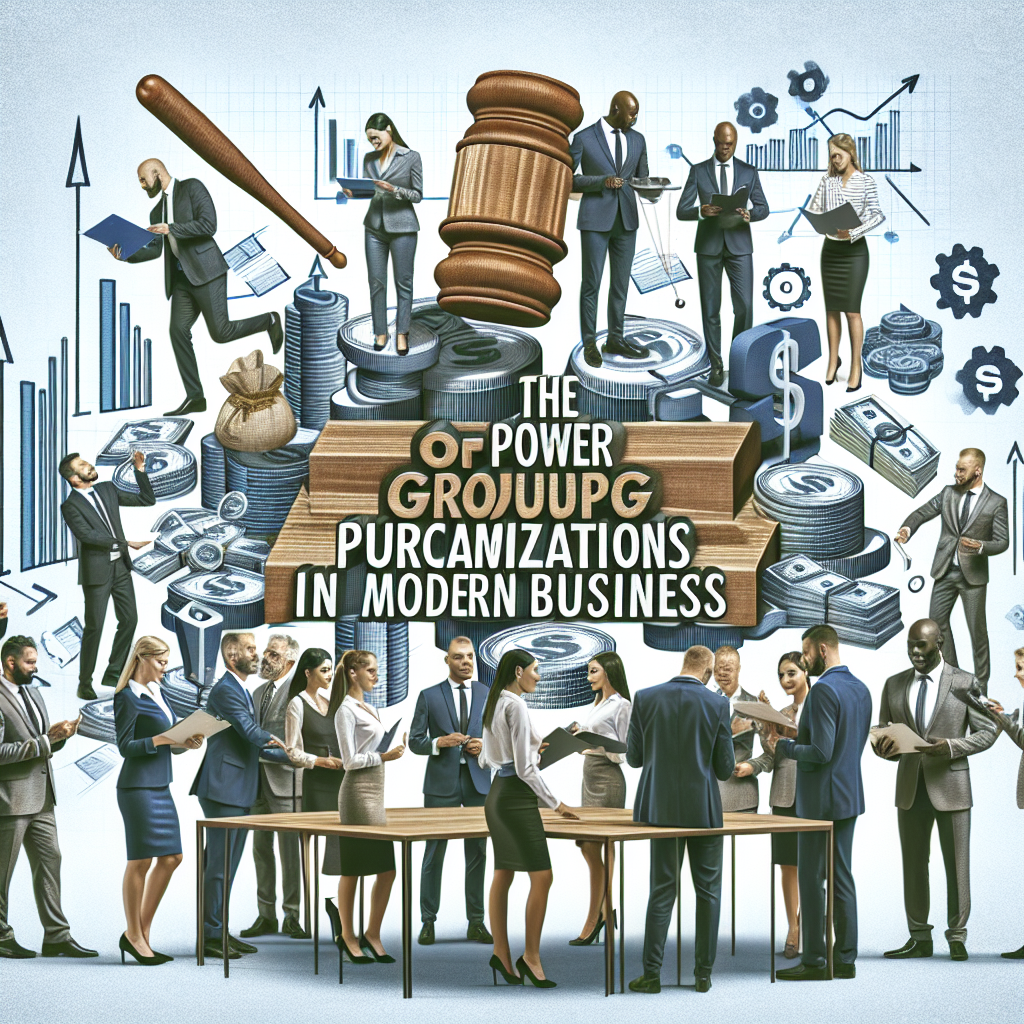The procurement talent shortage is a pressing issue that many organizations are facing today. As the demand for skilled procurement professionals continues to rise, the supply of qualified talent is struggling to keep up. This shortage can be attributed to a variety of factors, including an aging workforce, a lack of specialized education and training programs, and the increasing complexity of the procurement function. As a result, organizations are finding it increasingly difficult to recruit and retain top talent in procurement, which can have a significant impact on their ability to effectively manage their supply chains and drive business success.
One of the key challenges of the procurement talent shortage is the lack of specialized education and training programs for aspiring procurement professionals. Many universities and colleges do not offer dedicated procurement or supply chain management programs, which means that individuals interested in pursuing a career in procurement often have to seek out alternative paths to gain the necessary skills and knowledge. Additionally, the rapidly evolving nature of the procurement function means that even experienced professionals may struggle to keep up with the latest trends and best practices. This can create a skills gap that makes it difficult for organizations to find candidates who possess the expertise needed to excel in procurement roles. As a result, organizations must take proactive steps to address the talent shortage and ensure that they have the skilled professionals they need to drive their procurement functions forward.
Recruiting and Retaining Top Talent in Procurement
Recruiting and retaining top talent in procurement is essential for organizations that want to build a strong and effective supply chain. However, in today’s competitive job market, this is easier said than done. The procurement talent shortage means that there is fierce competition for skilled professionals, and organizations must work hard to attract and retain the best candidates. To do this, organizations need to develop a strong employer brand that highlights the opportunities for growth and development within their procurement function. They also need to offer competitive compensation packages and benefits to attract top talent and keep them engaged and motivated.
In addition to offering competitive compensation packages, organizations can also focus on creating a positive work environment that fosters collaboration, innovation, and continuous learning. This can help to attract top talent who are looking for a supportive and dynamic workplace where they can thrive and grow. Furthermore, organizations can invest in professional development opportunities for their procurement teams, such as training programs, certifications, and mentorship initiatives. By providing these opportunities, organizations can demonstrate their commitment to helping their employees succeed and grow within the procurement function. Ultimately, by focusing on recruiting and retaining top talent in procurement, organizations can build a strong and effective team that is well-equipped to drive their supply chain success.
Developing a Strong Procurement Training and Development Program
Developing a strong procurement training and development program is essential for addressing the talent shortage and ensuring that organizations have the skilled professionals they need to succeed. A comprehensive training and development program can help to bridge the skills gap by providing employees with the knowledge, skills, and tools they need to excel in their procurement roles. This can include technical training on procurement processes and systems, as well as soft skills training on negotiation, communication, and relationship building. By investing in a robust training and development program, organizations can empower their employees to take on new challenges and drive continuous improvement within the procurement function.
In addition to technical and soft skills training, organizations can also offer professional development opportunities such as certifications, workshops, and mentorship programs. These initiatives can help employees stay up-to-date with the latest trends and best practices in procurement, as well as connect with industry experts who can provide guidance and support. Furthermore, organizations can encourage employees to pursue continuous learning through self-study, online courses, and industry events. By fostering a culture of continuous learning and development, organizations can ensure that their procurement teams are well-equipped to tackle the challenges of today’s complex supply chain landscape. Ultimately, by developing a strong procurement training and development program, organizations can build a talented and capable team that is prepared to drive their procurement function forward.
Leveraging Technology to Fill the Talent Gap
Leveraging technology is an effective way for organizations to fill the talent gap in procurement by automating routine tasks and freeing up time for strategic activities. By implementing advanced procurement software and tools, organizations can streamline their processes, improve efficiency, and reduce the need for manual intervention. This can help to alleviate some of the pressure on existing procurement teams and enable them to focus on higher-value activities such as strategic sourcing, supplier relationship management, and risk mitigation. Additionally, by leveraging technology, organizations can attract tech-savvy professionals who are looking for opportunities to work with cutting-edge tools and systems.
Furthermore, technology can also help organizations to capture and analyze data more effectively, which can provide valuable insights into their supply chain performance and help them make more informed decisions. By leveraging advanced analytics tools, organizations can identify trends, risks, and opportunities within their supply chain, which can inform their strategic planning and drive continuous improvement. Additionally, by using technology to automate data collection and analysis, organizations can reduce the burden on their procurement teams and enable them to focus on more strategic activities. Ultimately, by leveraging technology to fill the talent gap in procurement, organizations can improve their efficiency, effectiveness, and competitiveness in today’s fast-paced business environment.
Building a Diverse and Inclusive Procurement Team
Building a diverse and inclusive procurement team is essential for organizations that want to attract top talent and drive innovation within their supply chain function. By fostering diversity and inclusion, organizations can create a workplace where employees from different backgrounds feel valued, respected, and empowered to contribute their unique perspectives and ideas. This can lead to more creative problem-solving, better decision-making, and improved performance within the procurement function. Additionally, by building a diverse team, organizations can attract a wider pool of candidates with different skills, experiences, and perspectives, which can help them address the talent shortage more effectively.
To build a diverse and inclusive procurement team, organizations can focus on creating a supportive work environment where all employees feel welcome and included. This can include implementing policies and practices that promote diversity and inclusion, such as flexible work arrangements, mentorship programs, and employee resource groups. Additionally, organizations can invest in diversity training for their employees to raise awareness of unconscious bias and promote inclusive behaviors. By creating a culture of diversity and inclusion within their procurement function, organizations can attract top talent from all backgrounds who are looking for an inclusive workplace where they can thrive and grow. Ultimately, by building a diverse and inclusive procurement team, organizations can create a more dynamic and innovative workforce that is well-equipped to tackle the challenges of today’s global supply chain landscape.
Collaborating with Educational Institutions to Cultivate Future Talent
Collaborating with educational institutions is an effective way for organizations to cultivate future talent in procurement by helping to shape the curriculum of relevant programs and providing students with valuable learning opportunities. By working closely with universities and colleges that offer supply chain management or business programs, organizations can ensure that students are gaining the knowledge and skills they need to succeed in procurement roles. This can include providing input on course content, offering guest lectures or workshops, or even sponsoring student projects or internships. By collaborating with educational institutions in this way, organizations can help to bridge the skills gap by ensuring that students are well-prepared for careers in procurement.
Furthermore, collaborating with educational institutions can also help organizations to identify promising talent early on through internship programs or recruitment events. By engaging with students while they are still in school, organizations can build relationships with potential future employees and provide them with valuable learning experiences that will prepare them for success in procurement roles. Additionally, by collaborating with educational institutions, organizations can raise awareness of career opportunities in procurement among students who may not have considered this field before. By cultivating future talent through collaboration with educational institutions, organizations can ensure that they have a pipeline of skilled professionals who are well-prepared to drive their procurement function forward.
Adapting to the Changing Landscape of Procurement Talent Acquisition
Adapting to the changing landscape of procurement talent acquisition is essential for organizations that want to stay ahead of the curve in today’s fast-paced business environment. As the demand for skilled procurement professionals continues to rise, organizations must be proactive in adapting their talent acquisition strategies to attract top candidates. This may include leveraging social media platforms to reach potential candidates more effectively or using data analytics tools to identify promising talent within their networks. Additionally, organizations may need to rethink their recruitment processes to make them more agile and responsive to changing market conditions.
Furthermore, as remote work becomes more prevalent in today’s business environment, organizations may need to adapt their talent acquisition strategies to accommodate virtual recruitment processes. This may include using video interviews or virtual assessment tools to evaluate candidates from anywhere in the world. Additionally, organizations may need to rethink their onboarding processes to ensure that new hires feel connected and supported from day one, even if they are working remotely. By adapting to the changing landscape of procurement talent acquisition in these ways, organizations can stay ahead of the competition and attract top talent more effectively.
In conclusion, the procurement talent shortage is a pressing issue that many organizations are facing today. To address this challenge effectively, organizations must focus on recruiting and retaining top talent in procurement by developing strong employer brands, offering competitive compensation packages, creating positive work environments, investing in professional development opportunities, leveraging technology effectively, building diverse and inclusive teams, collaborating with educational institutions, and adapting their talent acquisition strategies to meet changing market conditions. By taking proactive steps in these areas, organizations can build talented and capable teams that are well-equipped to drive their supply chain success now and into the future.





